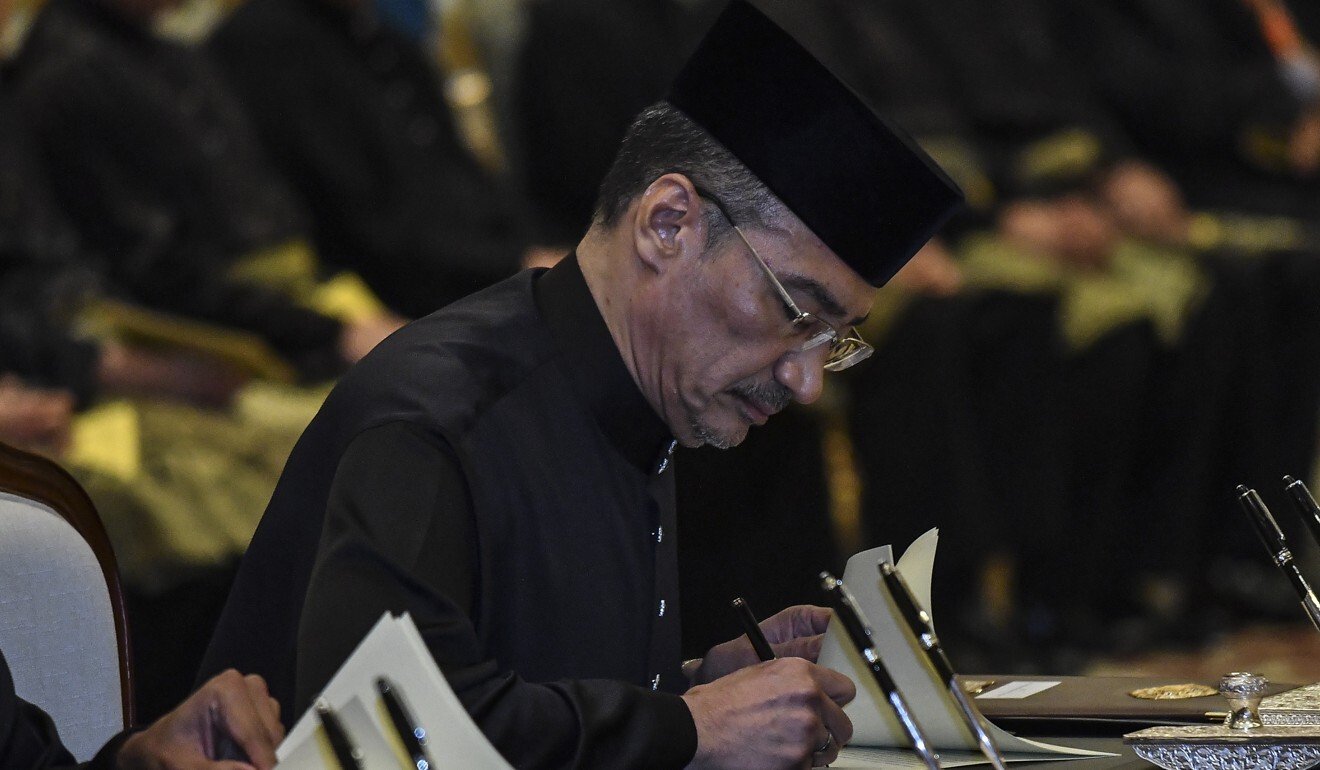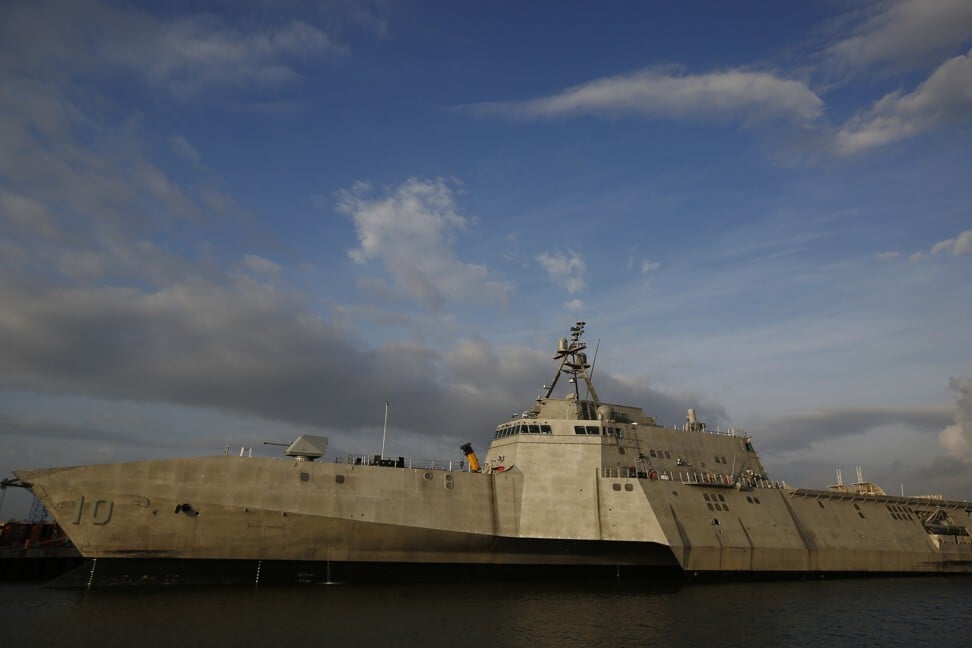
Asean stays on the sidelines as South China Sea tensions mount
- Vietnam and the Philippines have lodged protests against China’s activities but other Southeast Asian states have been restrained
- While Washington’s presence is welcome, Asean countries will not publicly admit it and neither will they attempt a collective response, says an analyst
Beijing claims a massive section of the South China Sea that extends roughly 1,000 miles from its southern shores. It has used Chinese government survey vessels, coastguard ships and fishing militia boats to maintain a presence there.
Vietnam accuses Beijing of ‘seriously violating’ sovereignty in South China Sea
The remaining eight Asean members have remained largely reticent and when they have commented, remarks have focused on the importance of avoiding conflict and maintaining regional stability.
Joseph Liow Chin Yong, who is an expert on Asia-Pacific geopolitics at Singapore’s Nanyang Technological University, said the preference of Asean states was to engage in behind-the-scenes diplomacy, which allowed them to defend their integrity without burning any bridges with Beijing.
SOVEREIGNTY IS KEY
Hanoi’s decision to clash with Beijing head on reflects the neighbours’ complex relationship, where a concerted effort to boost bilateral trade has not dampened its assertions of national interest.
Last week, it publicly opposed China’s annual summer fishing ban and urged its fisherman to keep up their activities around the Paracel Islands.
Last month, the smaller Communist nation protested China’s decision to establish administrative districts on the Paracels, and another on the Spratly Islands, which are contested by Hanoi, Manila and Beijing. That came after Vietnam blamed China and lodged an official protest for sinking its fishing boat though the latter accused the vessel of ramming a coastguard ship.
Hanoi is used to bilateral ties with Beijing turning sour, so it would rather protect its sovereignty than worry about fuelling hostilities
Trung Nguyen, head of the international politics department at Vietnam National University, said Vietnam had opposed the fishing ban since it was introduced in 1999 and while it was aware of the risk of punitive action in the form of trade disruptions or travel restrictions, Hanoi wasn’t “too concerned”.
“Hanoi is used to bilateral ties with Beijing turning sour, so it would rather protect its sovereignty than worry about fuelling hostilities,” he said. “Vietnam does not tolerate the fact that a neighbouring giant can impose a fishing ban in their waters, as stipulated by the United Nations Convention on the Law of the Sea.”

Jay Batongbacal, a maritime law expert and associate professor at the University of the Philippines, acknowledged Manila was expressing a stronger position “which hasn’t been done recently”, but did not anticipate things getting more heated.
Philippines expresses concern after China-Vietnam incident in South China Sea
“Under the Duterte administration, the Philippines prefers to carry out diplomacy by submitting protests without announcement to the public to accommodate China’s desire for affairs to be handled quietly,” Batongbacal explained.
“I do not expect Manila to take any drastic action towards Beijing unless the PLA physically takes over Philippine-occupied islands,” said Anna Patricia Saberon, faculty member at Ateneo de Naga University. “The Philippine leadership is visibly pro-China and that will continue until Dutere’s term ends.”

When the months-long stand-off between Chinese and Malaysian vessels over West Capella’s activities peaked in April with US and Australian warships entering the area, Malaysian Foreign Minister Hishammuddin Hussein warned of “miscalculations” that could affect stability and peace in the region.
In his first official remarks on the stand-off, he said Malaysia was committed to safeguarding its interests and maintained “open and continuous communication” with all relevant parties, including China and the US.
Two US warships in South China Sea during China-Malaysia stand-off
Malaysia has moved to demonstrate its territorial interests though, last year claiming an extended continental shelf in the northern part of the South China Sea that Beijing opposed.

SO WHAT NEXT?
Critics say Asean’s hesitance to take a united approach after years of simmering tensions in the disputed waters could embolden China to do more to stake its “historical rights” to the waters. This is especially because talks to finalise a code of conduct in the disputed waters have been pushed back because of the Covid-19 pandemic.
Over the past six years, China has built artificial islands and facilities in the South China Sea that can be used for military purposes. It has sparked a countermove by the US, which has no maritime claims in the waters, to maintain a strong presence through freedom of navigation operations and military flights, also as a means of showing support for its Asian allies.
Trung Nguyen from Vietnam National University believes Washington’s assistance should be welcomed.
“Washington’s commitments of upholding international law are what Asean nations need to protect their rights in the face of China’s assertive behaviour,” he said.
The South China Sea is a regional concern but it’s left to each claimant state to find a solution. Asean was never meant to be involved in conflict resolution.
But Liow of NTU said that while US patrols are instrumental to regional security, no Asean state would ever declare that because they do not want to be seen siding with Washington against Beijing.
Nguyen Quang Dy, a former Vietnamese foreign ministry official, has suggested a new regional security architecture to thwart future Chinese maritime expansion.
One idea could be a “Quad-plus” arrangement, in which the US, Japan, India and Australia work closely with Asean countries, he wrote in a note published by the Australian Strategic Policy Institute, which is funded by Canberra and foreign governments including the US.
There is little indication though that the status quo is set to change.
“The South China Sea is a regional concern but it’s left to each claimant state to find a solution,” Liow said. “Asean was never meant to be involved in conflict resolution.”
Help us understand what you are interested in so that we can improve SCMP and provide a better experience for you. We would like to invite you to take this five-minute survey on how you engage with SCMP and the news.

